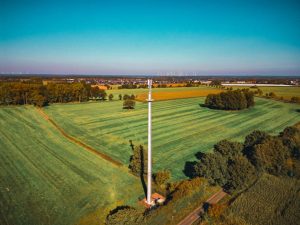How B2B Tech Vendors Can Transform Go-to-Market Strategies in a Rapidly Changing Economy

Adapting B2B Sales Strategies to a Volatile Economy

Pexels
The world of B2B sales is undergoing unprecedented shifts, driven by economic uncertainty, evolving buyer preferences, and the relentless pace of technological advancement. Gone are the days of rigid annual sales planning. Businesses are now forced to pivot their strategies multiple times a year while struggling to keep pace with the changes. According to recent Gartner research, 64 percent of sales organizations report altering their strategies at least twice annually, yet 66 percent of Chief Sales Officers (CSOs) admit they find it difficult to adapt to rapid changes. This dynamic environment underscores the need for agility and innovation in sales approaches, especially as traditional models prove increasingly inadequate.
One of the most striking findings in the research is that 87 percent of sales professionals believe their leaders fail to identify the skills required for success amidst these challenges. This represents a critical disconnect between strategy and execution. Compounding the issue is the limited proficiency of CSOs with artificial intelligence (AI). Only 13 percent are regarded by their peers as AI-savvy, despite the growing integration of AI into sales workflows. With AI becoming a central component of operations, leaders must address this competency gap to remain competitive.
The Buyer Behavior Shift: Rep-Free Sales Experiences on the Rise

Pexels
The preferences of modern B2B buyers are reshaping the sales landscape in profound ways. A significant 61 percent of buyers now prefer a vendor sales experience that eliminates the need for direct contact with representatives. This shift toward a “rep-free” model challenges the long-standing tradition of relationship-based selling, which has formed the backbone of B2B commerce for decades. Moreover, cold outreach methods have seen a dramatic decline in effectiveness, with unsolicited efforts resulting in only 11 percent of purchases — a staggering 30 percent drop in efficacy.
In response, B2B tech vendors must prioritize a more personalized and hybrid approach that aligns with buyer needs. Modern buyers engage across a mix of traditional and digital marketing touchpoints, with 72 percent using rep-led channels and 28 percent relying on digital channels. This hybrid buyer journey calls for a seamless alignment between sales and marketing functions to craft cohesive, buyer-centric strategies. Alarmingly, 80 percent of critical commercial activities are carried out without significant collaboration between sales and marketing teams, underscoring a missed opportunity for businesses to capitalize on this alignment.
Embracing Agility and Generative AI in B2B Sales

Pexels
In today’s fast-paced market, adaptability and innovation have emerged as the linchpins of success for B2B sales organizations. Research highlights that businesses with highly adaptable operational designs are 3.2 times more likely to outperform their less-agile competitors. This requires embedding agility into sales strategies not as a contingency plan but as a core organizational capability. The concept of the “minimally viable strategy” is particularly relevant here, allowing organizations to rapidly launch and refine go-to-market (GTM) approaches based on real-time buyer feedback.
Generative AI (GenAI) presents a massive opportunity for forward-thinking sales organizations. With 22 percent of buyers already reporting the use of GenAI during their purchase journeys, the technology is poised to redefine the way businesses approach prospecting, personalization, and value demonstration. However, questions surrounding AI trustworthiness signal that this technology remains in its early stages, providing growth opportunities for vendors who can deliver reliability and transparency alongside technological innovation.
Value-Centric Selling: A Path to Stronger Growth

Pexels
As buyer expectations evolve, so too must the focus of B2B sales organizations. The integration of value-centric selling has emerged as a critical pathway to building stronger buyer relationships and increasing engagement in high-quality deals. Gartner’s research reveals that buyers who experience “value framing”—guidance on what actions to take—are 20 percent more likely to engage in successful transactions. Moreover, those who receive “value affirmation”—reassurance they made the right decision—are 30 percent more likely to make repeat purchases.
Incorporating value-driven sales practices requires investing in value engineering skills within sales teams. These skills enable sales professionals to frame their offerings in a way that demonstrates clear, measurable outcomes for the buyer. Ultimately, aligning sales strategies with the core priorities of buyers fosters deeper trust and engagement, creating a competitive edge in an increasingly crowded market.
Preparing for the Future: Key Takeaways for CSOs

Pexels
The transformation required for B2B organizations in today’s landscape is nothing short of a fundamental disruption. Conventional approaches—such as hiring more sales staff or deploying additional tools—no longer suffice. Instead, successful enterprises are embracing strategic alignment across functions, leveraging emerging technologies like GenAI, and fostering continuous skill development for their workforce. The era of “spray and pray” sales tactics is over; adaptive planning and data-driven decision-making are now the key drivers of sustainable growth.
In conclusion, Chief Sales Officers must view change not as a threat but as an opportunity to innovate and lead. By challenging conventional norms, fostering cross-functional collaboration, and embedding agility into operational frameworks, sales organizations can position themselves for long-term success. As the landscape continues to evolve, the ability to adapt swiftly and effectively will be the foundation for surviving—and thriving—in the competitive world of B2B commerce.




